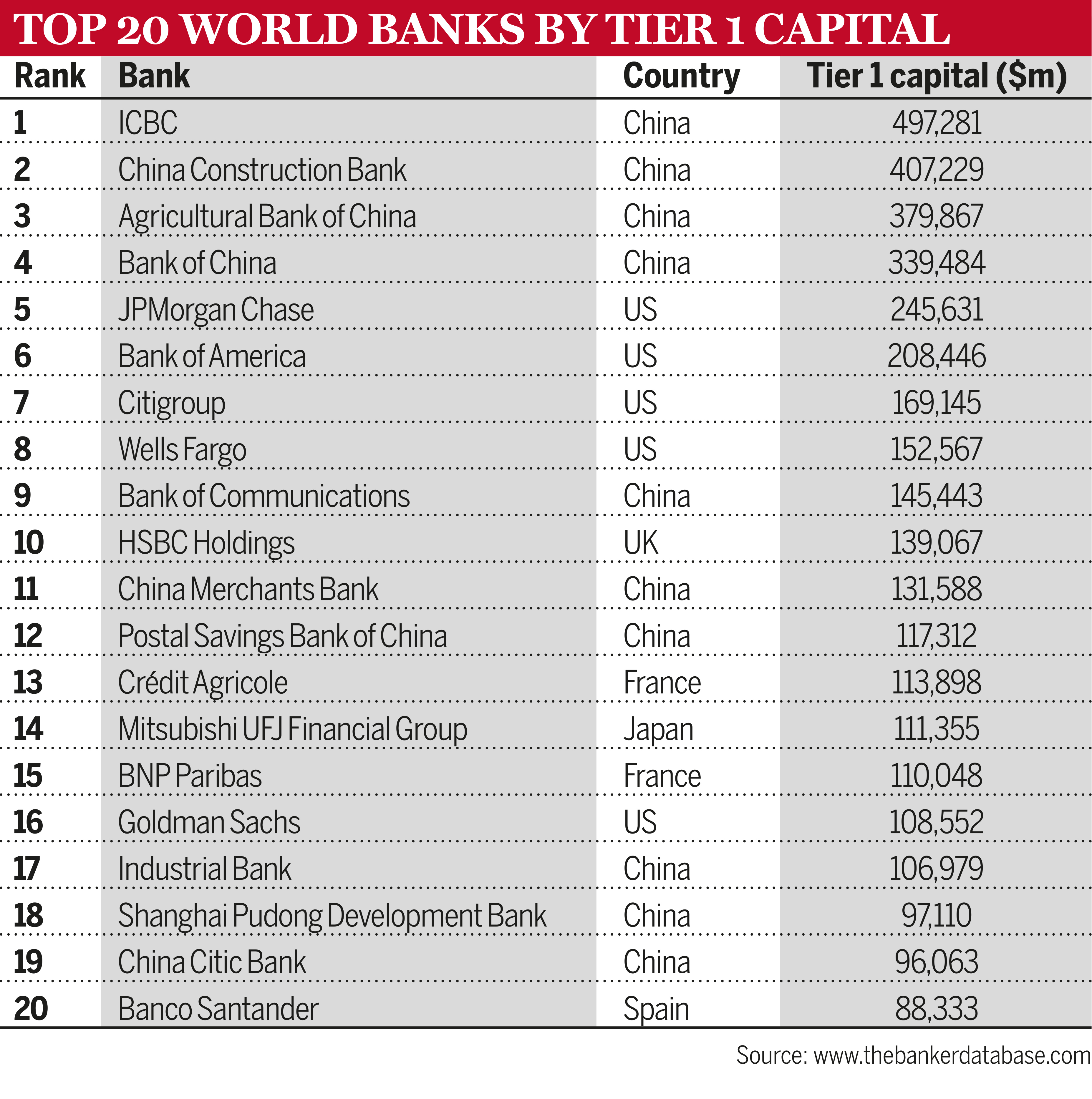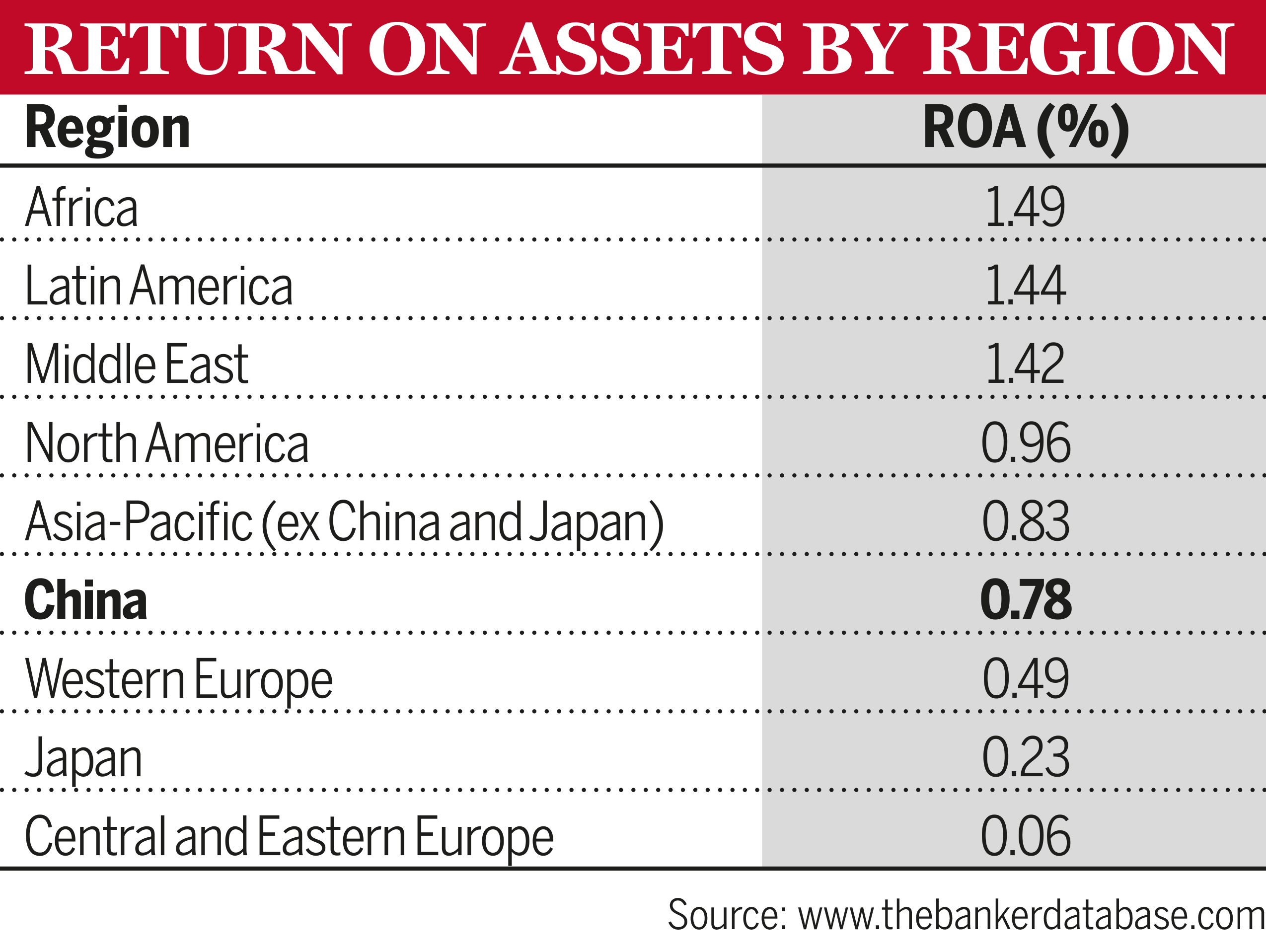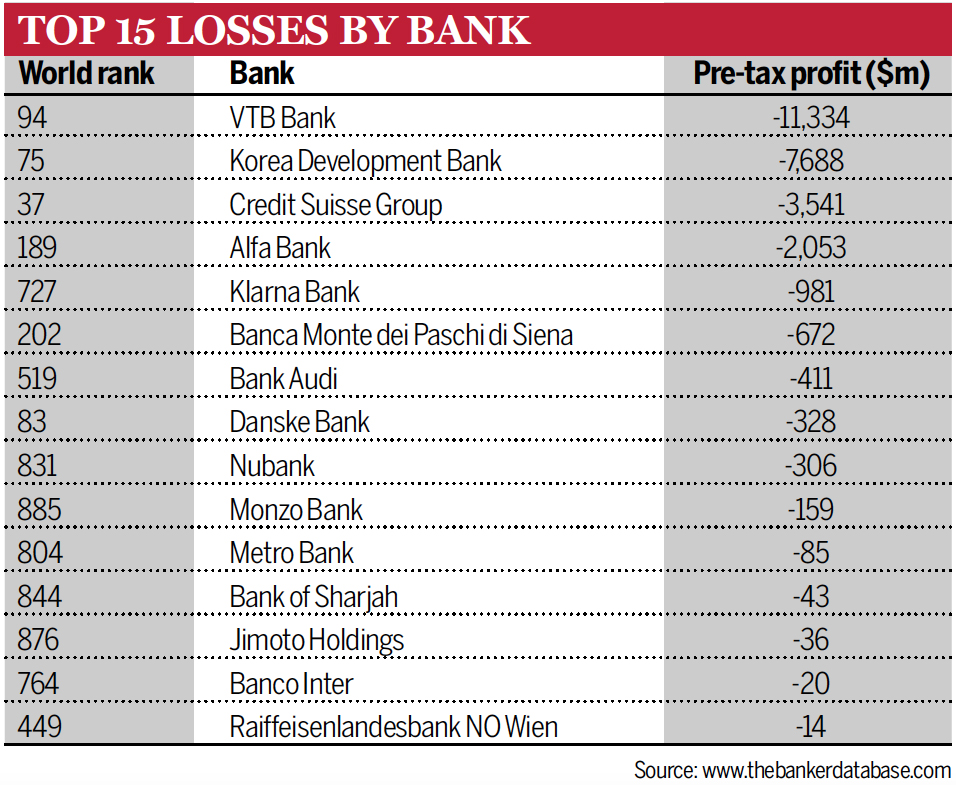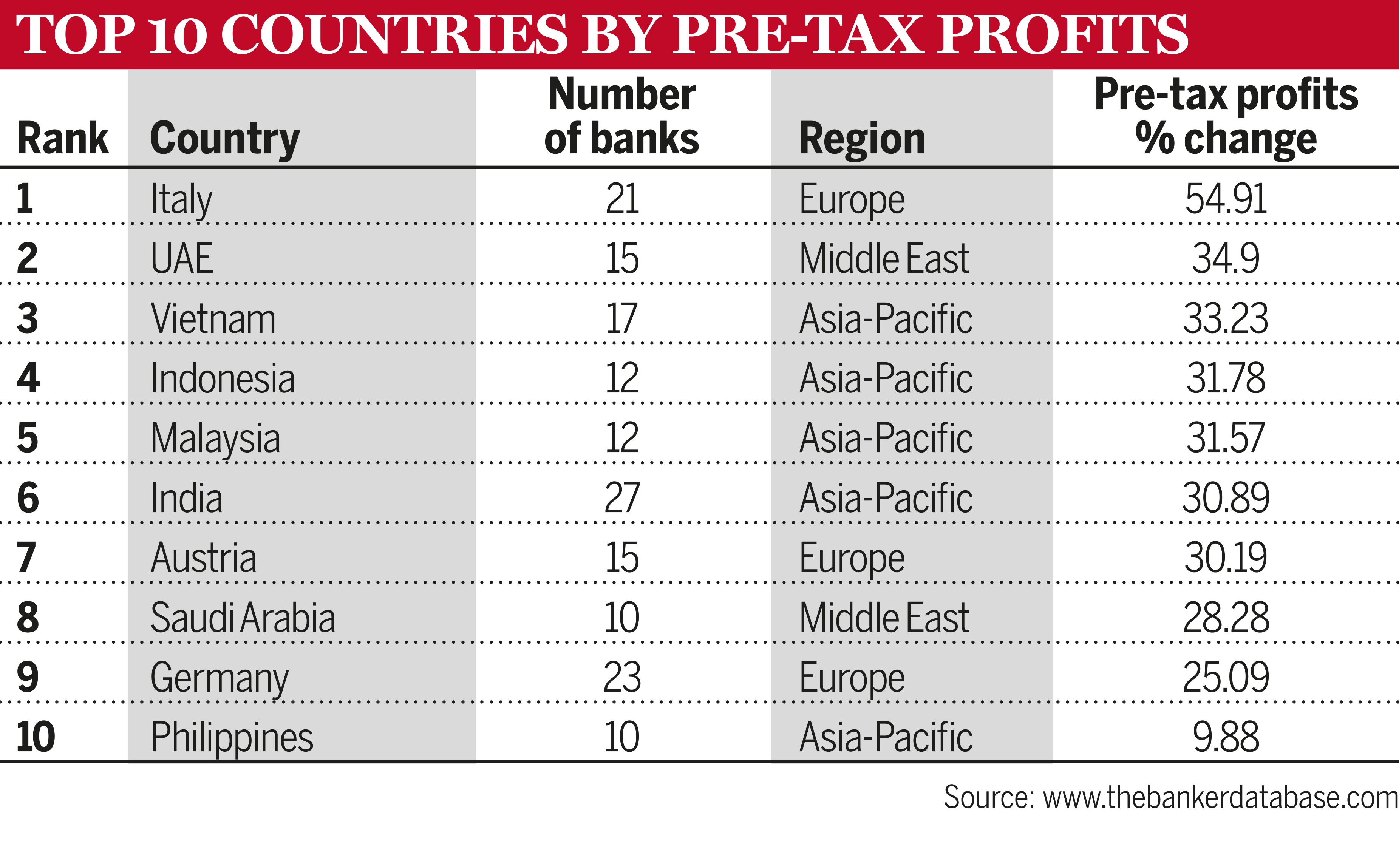5 July 2023: The growth trajectory of the world’s largest banks has suffered a setback, with contractions across the three key metrics – Tier 1 capital or a bank’s core financial strength*, total assets and pre-tax profits (PTP) – according to The Banker’s Top 1000 World Banks 2023 ranking.
Aggregate Tier 1 capital has declined by 2.08%, to $10.2tn, and total assets have dropped by 1.65%, to $151.7tn, while combined PTP fell by 6.46%, to $1.3tn, after growing by 53.73% in the previous edition of the ranking.
In addition, the minimum Tier 1 capital needed to enter the 2023 ranking saw the smallest-ever increase of just $1m, to reach $557m.
The global slowdown can be predominantly attributed to the effect of a strong US dollar, the currency in which the ranking is denominated. The dollar appreciated 12% against the British pound, 9% against the Chinese yuan and 7% against the euro in 2022, following several rate hikes by the US Federal Reserve.
Even without the foreign exchange effect, the world’s banking industry has experienced muted growth in 2022, the full financial year data that the Top 1000 ranking is based on, but overall, the sector remains healthy.
The Banker’s editor Joy Macknight said: “At first glance, it appears as if the global banking industry had a tough year. However, much of the slowdown in growth can be attributed to a strong dollar in 2022. Asset, loan and deposit levels are stable, and banks across the world are well capitalised and preparing for what is coming next.”
Subdued growth in China
China, which has been the engine of growth for the global banking industry during the past decade, saw its aggregate Tier 1 capital contract by 1.56% in 2022, to $3.3tn. However, the growth rate would be around 8% if the yuan was used as the base currency. While a much more positive result, this remains well below the double-digit expansion seen in the previous four years.
Taking the exchange rate effect into consideration, China continues to outpace its nearest rival, the US, by both Tier 1 capital and asset growth. Notably, China has expanded its aggregate total assets by 1.12%, to reach $42tn, even with the strong dollar influence. Overall, China holds 32.67% of the world’s Tier 1 capital and 27.69% of its assets.
The US has benefited from the strong dollar, with an additional 10 lenders in the 2023 ranking to bring its total up to 196 banks, 56 more than China. In spite of this, the US’s Tier 1 capital base expanded by just 1.51%.
Industrial and Commercial Bank of China (ICBC) tops the ranking for a record-breaking 11th year in a row, with Tier 1 capital of $497.3bn. While its Tier 1 fell by 2.27%, the lender expanded its total assets by 2.63%. ICBC is followed in the ranking by China Construction Bank, Agricultural Bank of China and Bank of China, marking the sixth year that they have held on to the top four spots.
In addition, China’s Bank of Communications has overtaken HSBC, the only European bank in the top 10, to reach ninth position.
In fifth place behind the top Chinese lenders, JPMorgan Chase remains the largest US bank by Tier 1 capital ($245.6bn), followed by Bank of America (BofA), Citigroup and Wells Fargo. Of the four, only BofA expanded its Tier 1 base, by 6.1%, while Citi was the only one to increase its total assets, by 5.47%.
Most of the merger and acquisition activity in 2022 involved US community banks. Of the 21 deals completed in 2022 by banks in the Top 1000, 11 concerned US-based banks, according to Dealogic. Further mergers have become increasingly likely following the collapse of Silicon Valley Bank, Silvergate Bank and Signature Bank in March, as well as JPMorgan Chase’s acquisition of First Republic Bank in May.
Tables
Notes
*Tier 1 capital is the core measure of a bank’s financial strength under the Basel regulatory framework.
Contact
For more information, please contact:
Mark Staniland, Financial Times | mark.staniland@ft.com
TEAM LEWIS | banker@teamlewis.com
About The Banker
The Banker is the world’s premier banking and finance resource, providing global financial intelligence since 1926.
The Banker is the key source of data and analysis for the industry. The Banker’s Top 1000 World Banks ranking has been setting the industry benchmark since 1970, providing comprehensive intelligence about the health and wealth of the banking sector. To find out more, visit www.thebanker.com/top1000.
Joy Macknight is the editor of The Banker. She joined the publication in 2015 as transaction banking and technology editor and was promoted to editor in March 2021. She has been a financial and technology journalist for 20 years.
About the Financial Times
The Financial Times is one of the world’s leading business news organisations, recognised internationally for its authority, integrity and accuracy. The FT has a record paying readership of 1.2 million, more than one million of which are digital subscriptions. It is part of Nikkei Inc., which provides a broad range of information, news and services for the global business community.











